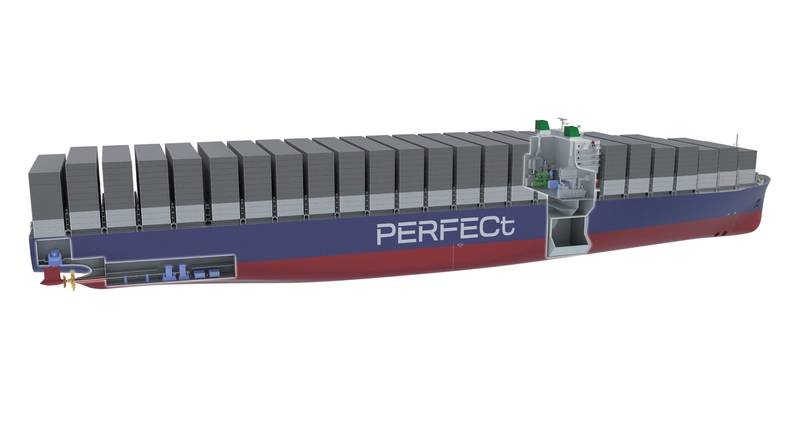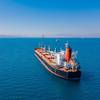A joint industry project (JIP) examining the potential of developing an electric-driven 20,000 TEU ultra large container vessel (ULCV) with an LNG-fuelled combined cycle gas and steam turbine (COGES) electric power plant aims to utilize LNG as a primary fuel for an ultra-low emissions profile, in a design with at least the same carrying capacity and efficiency as existing ULCVs.
At the Nor-Shipping trade fair in Oslo, the PERFECt project partners ABB, OMT, GTT, Caterpillar’s Solar Turbines, CMA CGM, its subsidiary CMA Ships, and DNV GL, presented the results of the JIP’s second phase, which looked to validate the phase I results and develop the concept to a “ready to order” stage.
“The PERFECt project has brought a new set of expert capabilities together and delivered promising results,” said Gerd Würsig, Business Director for LNG-fuelled ships at DNV GL – Maritime. “The impulse behind this project was the interest in seeing how a modern ultra large container ship design could benefit from clean fuel and highly efficient COGES technology. We have achieved our objectives and now have a validated design concept with enough technical detail to develop a business case.”
The use of a combined gas and electric steam turbine (COGES) system, in combination with an all-electric design, offered exceptional performance with several advantages, the partners found. Propelling the ship with electrical motors enabled the power generation and propulsion systems to be placed in separate sections of the ship. And with the COGES system providing power for both propulsion and auxiliary systems, an engine room was not needed. So, the power plant, together with the integrated LNG tanks, could be moved below the deck house – freeing up considerable space for more container slots.
“The COGAS electric propulsion system provides larger flexibility for arrangement of containers in combination with a high overall propulsive efficiency of the vessel,” said Thomas Eefsen, Chief Commercial Officer, OMT.
“The results show technical and economic feasibility of the project. Existing technologies can be adopted to make PERFECt II a reality,” declared Julien Bec, GTT, Vice-President of LNG as Fuel directorate.
“The collaboration, innovation and enthusiasm of all partners has resulted in a highly efficient ship concept that leads the way towards the next generation of ocean transport,” said Barbara Stanley, Vice President, Power Generation and Strategic Development, Solar Turbines Inc. (A Caterpillar Company). “Solar is proud to deliver technical solutions to our customers that are cost-effective and environmentally sensitive. Our SoLoNOx Dry Low Emissions (DLE) Gas Turbines, which operate on LNG, will not only exceed any current marine emission restrictions, but provide a wide margin against anticipated future restrictions. The resulting optimized power generation system is both reliable and highly efficient while being increasingly environmentally friendly.”
“The PERFECt ship is fitted with our custom-made propulsion solutions which combines outstanding propulsion efficiency and excellent maneuverability, enabling safe and environmentally friendly vessel operation,” said Juha Koskela, Managing Director, ABB Marine & Ports.
“The PERFECt project impressively demonstrates how the innovative coupling of established technologies can generate new options for marine propulsion,” said Prof. Dr.-Ing. Christoph Pels Leusden, Beuth University of Applied Sciences Berlin.
In addition to the improved overall arrangement of the vessel, a tailored hull shape and new propeller design add to the overall efficiency. The novel hull form with vertical bow is tailormade to the operational profile of the vessel, and with a high efficiency propeller in combination with a contra-rotating pod, the total propulsive efficiency is increased by around 5 percent.














